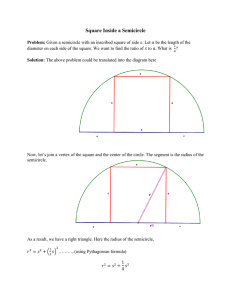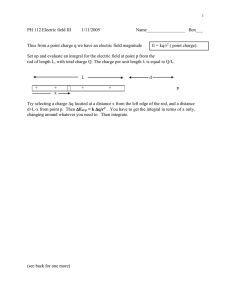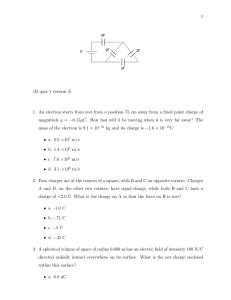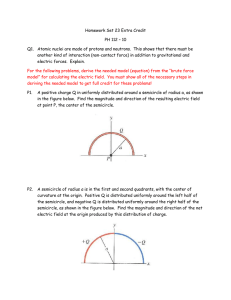2014/2 ENGINEERING DEPARTMENTS PHYSICS 2 RECITATION 1
advertisement
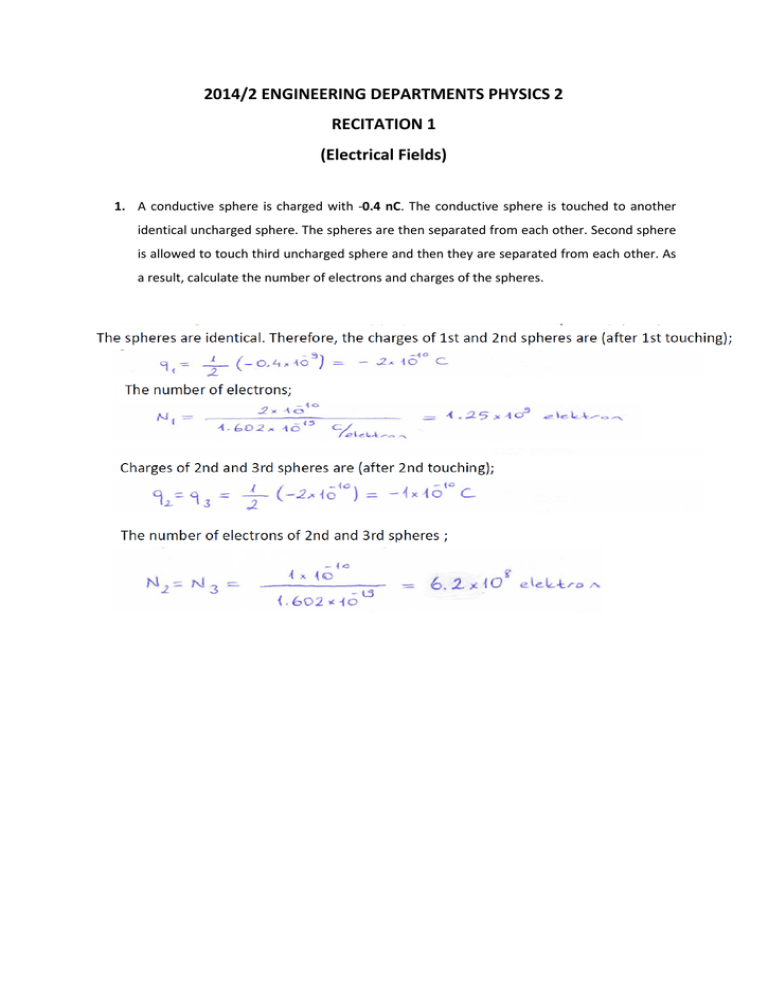
2014/2 ENGINEERING DEPARTMENTS PHYSICS 2 RECITATION 1 (Electrical Fields) 1. A conductive sphere is charged with -0.4 nC. The conductive sphere is touched to another identical uncharged sphere. The spheres are then separated from each other. Second sphere is allowed to touch third uncharged sphere and then they are separated from each other. As a result, calculate the number of electrons and charges of the spheres. 2. Three point charges are located at the corners of an equilateral triangle as shown in Figure 1. Calculate the resultant electric force on the 7µC charge. Figure 1 3. Four identical particles, each having charge +q, are fixed at the corners of a square of side L. A fifth point charge -Q (at P point) lies a distance z along the line perpendicular to the plane of the square and passing through the center of the square (Figure 2). Determine the force exerted by the other four charges on -Q? P Figure 2 4. A small, 2 g plastic ball is suspended by a 20 cm long string in a uniform electric field as shown in Figure 3. If the ball is in equilibrium when the string makes a 15.0° angle with the vertical, what is the net charge on the ball? Figure 3 5. Three charged particles are aligned along the y axis as shown in Figure 4. Find the electric field at P point. Determine the electric force on a Q charge placed on the P point. Figure 4 6. a) Two point charges are located on x-axis (Figure 5.a). Determine the electric field exerted by +q at a point on a distance of d. Determine the electric force on Q. b) Thin rod of length 2L carry equal charges q uniformly distributed along their length. Determine the electric field exerted by the rod at a point on a distance of d. Determine the electric force on a Q charge placed on that point (Figure 5.b). c) Identical thin rods of length 2L carry equal charges q uniformly distributed along their lengths. The rods lie along the x axis with their centers separated by a distance b – 2L (Figure 5.c). Determine the magnitude of the force exerted by the right rod on the left one. Figure 5 7. A uniformly charged insulating rod of length 14 cm is bent into the shape of a semicircle as shown in Figure 6. The rod has a total charge of -7.5 µC. Find the magnitude and the direction of the electric field at O, the center of the semicircle. Calculate the electric force on a 3 µC charge placed on the O point. Figure 6 8. A line of positive charge is formed into semicircle of radius R as shown in Figure. The charge per unit length along the semicircle is described by the expression 𝜆𝜆 = 𝜆𝜆0 cos Θ. Final; a. The total charge on the semicircle b. The electric field vector on point ‘O’ 9. A proton in a uniform electric field 640 N/C accelerates from the quiescent. After a while, its speed reaches to 1.2 x 106 m/s. (a) Calculate the acceleration of proton. (b) How much time passed to reach this speed? (c) What is the distance at the end of this period? (d) Find the kinetic energy at the end of this period?

